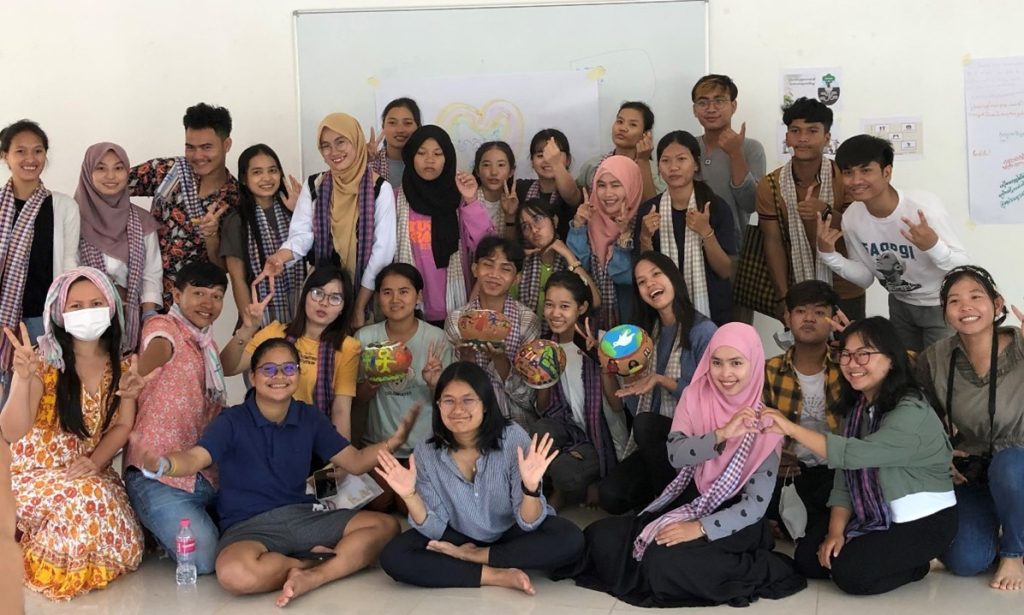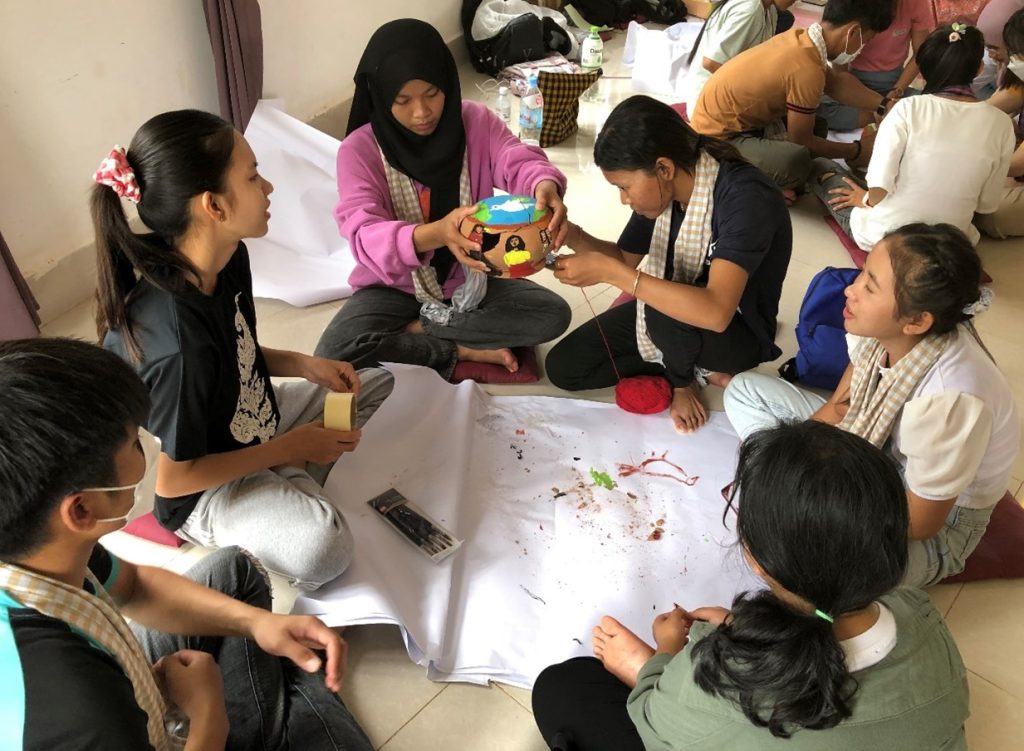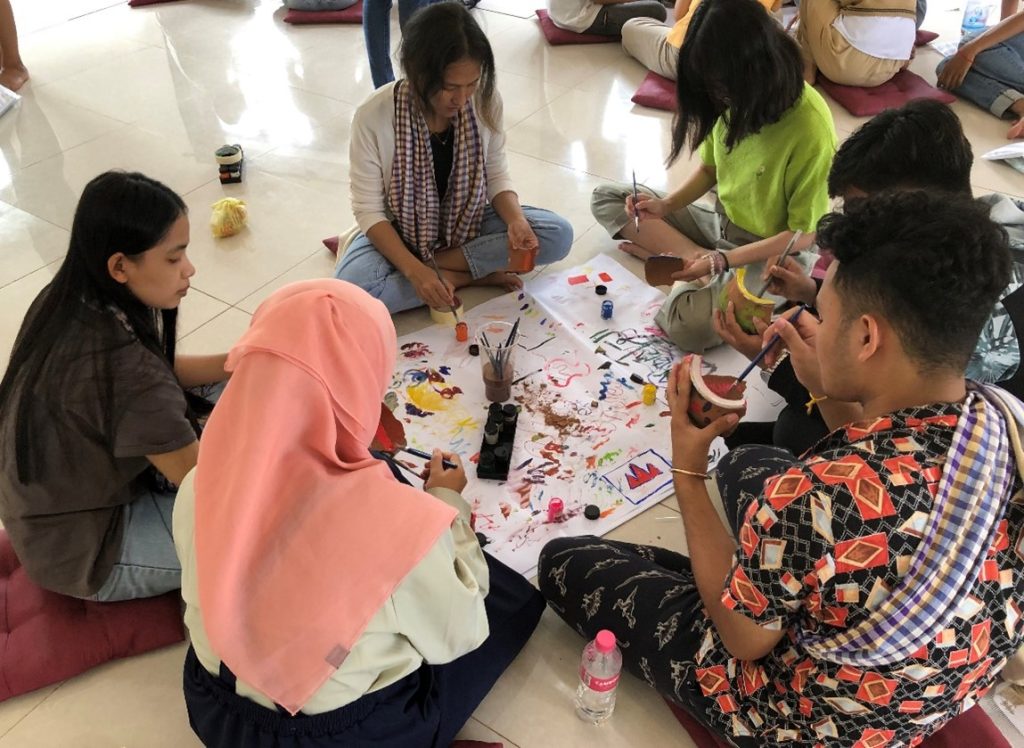One of the peacebuilding exercises that we’ve seen Women Peace Makers (WPM) and Peace Bridges Organization (PBO) use here in Cambodia is to split the training participants up into small groups with the assignment to work together to paint a clay pot with their vision of the future that they want for their communities.

This is, usually, after an initial period of building some trust among the group – who may belong to different ethnic groups, religions, economic backgrounds, or social classes – and is presented as an important set in illustrating, through art, what they hope for their communities. It, also, involves working together; it’s not just one person’s vision for the community. Despite our different cultures and backgrounds, our hopes and aspiration are usually not so foreign after all.

The painted clay pots are evocative and optimistic. The visions of the future communities are beautiful, especially when they’re presented by a group of diverse people who share a common commitment to peace. Art can help us to express and understand things that we struggle to convey with words, especially across communication barriers like language, culture, and disability.

And then our partner staff, who are facilitating this activity, take each group’s carefully painted clay pot, covered with hope for the future, and smash it into pieces.
That’s right. Without warning they suddenly take and break the artistic expression of everyone’s hopes.
Sometimes this is done while the participants are out of the room during break, they return to discover that their pots have been broken. Other times this is done while the participants are in the room.
The facilitators explain that the smashing of the pots represents conflict in the community. Conflict is inevitable. It is part of the human condition.
The participants are then asked how they feel about what just happened. Most are sad and disappointed. Some are angry. Others become cautious and distant.

Then the participants are asked what they want to do with the clay shards of the broken pots? Do they want to throw them out? Are they trash now? Were those visions for the future lost now? Do they want to try to fix them? What can they do?
Conflict is inevitable but we get to decide how we respond to it. We still have agency and power, even in the face of conflict.
The small groups then work together with the broken pieces of their pot, the broken representation of their dreams for their communities, in order to show what reconciliation might look like.

In one recent training, a group carefully and painstakingly secured the pieces back together using tape and glue only on the inside of the pot. This, they explained, symbolized internal healing and reconciliation but left the cracks visible. The wounds serve as a visible reminder of the conflict and, hopefully, as a reminder to work for peace to prevent the next conflict.

In the same training, another group took the broken pieces of the pot and painted the inner sections that they could not reach when it was whole. Instead of restoring their vision for the community to what it had been before the conflict, they instead grew their vision to encompass the parts of the community that had been hidden before the conflict. On the outside they had painted a bright future without conflict, but on the inside they painted the underlying causes of conflict being resolved. The focus was no longer outward but inward.

In the same training, another group reassembled the pot and then painted over their old vision for the community with many different colors. The paint blended together into a brown color and in the end the pot looked almost like they had never painted it to begin with. Then they painted a single bright peace symbol on it. This, they explained, symbolized healing and reconciliation where all peoples were blended together and differences were no longer important as the community worked toward lasting peace.
What did you think of the three group’s different approaches? Did you have any other ideas?

Personally, I thought about Kintsugi. The Japanese art of mending broken pottery with lacquered thick with powdered gold, silver, or platinum.
How about you?
What a beautiful picture of brokenness and healing. Yes, conflict is part of life. What we do with it reflects our faith.
A very interesting post! Thank you, Charles
I actually had a variety of reactions. When I read they broke the clay pots, it surprised me. As an artist, you invest not only time and energy into your art, but a piece of yourself. In my opinion. I reread your post, I watched the video, she did a great job, and I looked closely at each of the photos. For me, what I noticed was, each of them, felt like they were more invested in the session designed for healing. Their vibes felt different. When they were painting, it was a task to show cooperation, but now, they’re looking at solutions for healing and bringing the community closer together. It looked and felt, more like camaraderie. I’d like to try this at the next family gathering or reunion. It was very impressive. Thanks son 🙂
Such an interesting and powerful activity. I was pretty shocked to hear that the pots were broken and even felt some anger myself. The creativity and resilience shown through the solutions is very moving.